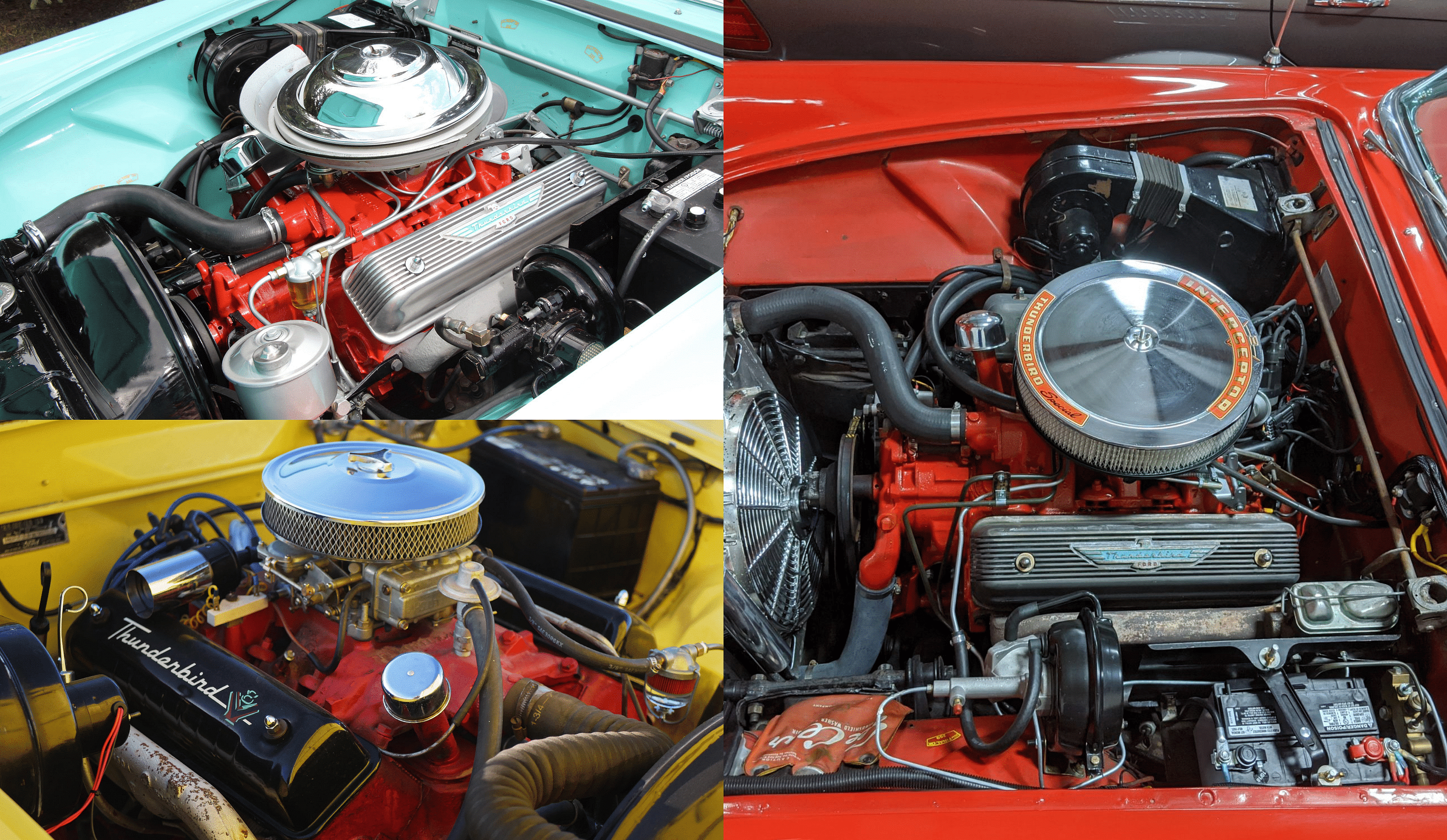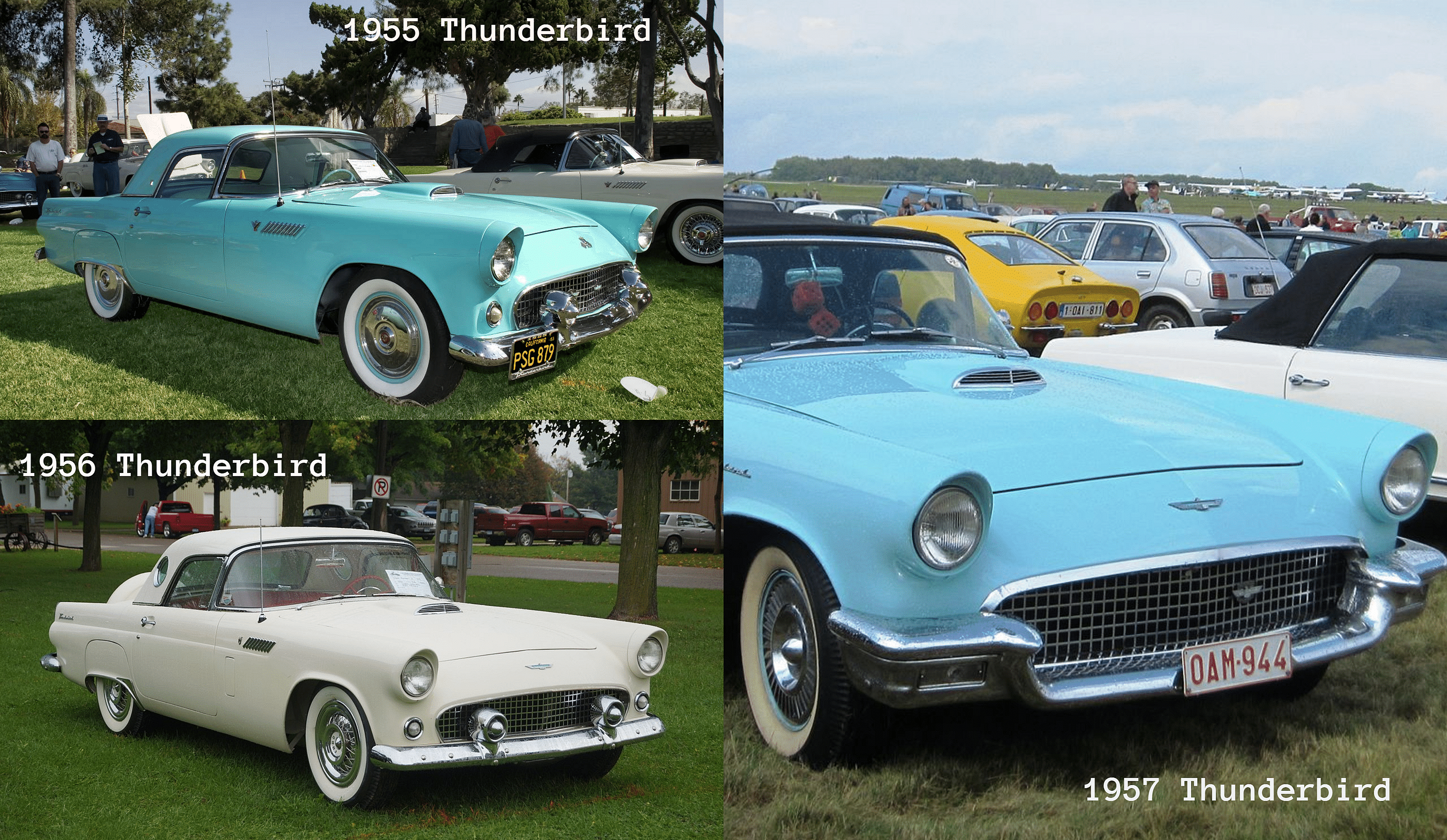The Ford Thunderbird Was Blue Oval’s Response To The Corvette
The Ford Thunderbird was the great American brand’s response to the previously-launched Chevrolet Corvette. To compete with the Corvette better, the Thunderbird came with similar coupe and hardtop versions. However, Ford did not market the Thunderbird as a sports car unlike the Corvette, hence the former was more focused on the driving experience and luxury than performance. Initially launched as a two-seater coupe and a roadster, the first-generation Thunderbird was also the last one to have a proper two-seater configuration.
Published January 30, 2024

The launch of the Chevrolet Corvette in 1953 almost stirred the US automotive industry and Ford wasn't prepared to not throw competition at them. With that aim, the Ford Thunderbird was born in 1955. The Thunderbird was practically rushed and it transitioned from the idea phase to the prototype phase within a year in 1954. The first-generation Thunderbird had the sleekest design among other Fords back then but also shared several minute styling cues with the regular Fords as well.
Soon after it hit the markets, the Ford Thunderbird was immensely popular and was considered a landmark vehicle for several future vehicles to come from other brands. The car was also featured in USA’s postage stamps for several years too. While the Thunderbird was launched to rival the Corvette, the former wasn’t marketed as a sports car, but a personal luxury car instead. However, the performance of the Y-block motor suggested otherwise.
What about the design and development of the Thunderbird?
Two gents, George Walker, and Louis D. Crusoe were responsible for the development of the Thunderbird. While the Corvette was out there with its sporty appeal, The Blue Oval decided to add a vehicle to its lineup which is sportier than the regular vehicles. The initial guidelines set by the brand were that there should be a two-seater car with a foldable soft top and it needed to be made with a majority of off-the-shelf components. As the design and development phase was nearing its end, the lack of a suitable name for their new car bugged Ford. As such, a collection of 5,000 names were suggested but the problem wasn’t solved.

Ford’s stylist back then, Alden Giberson, accepted the wager amount of $250 that was in place for anyone who would come up with a name for the car. And he suggested the name Thunderbird which was finalized. The car was showcased at the 1954 Detroit auto show, the first event after the Second World War. Soon after its launch, the car was an instant hit. The reason for its immense success was that Ford learned from General Motors’ mistakes during their launch of the Chevy Corvette and made the Thunderbird the car that Americans desired.
How did the Thunderbird perform?
When it comes to powering its luxury and sports cars, Ford never felt shy to use a V8. And the Thunderbird got the then-iconic Y-block V8 motor. The motor gained its name through the shape of its skirting which almost resembled the letter “Y”, hence the name. The car was launched with a 4.8-liter V8 that produced 193 horsepower and 280 lb-ft of torque. As a personal luxury car, the motor was mated to a 3-speed Fordomatic automatic transmission.

With an initial aim of a top speed of over 100 mph, the Thunderbird actually did it. With the motor driving the rear wheels of the car, the Thunderbird hit 60 mph from a standstill in under 11.2 seconds, indicating a sporty performance alongside being a luxury-focused car.
What updates did the car receive?
The first-generation Ford Thunderbird received a total of three updates till the second-generation model arrived in 1958. The 1955 model came with a fabric soft top while the detachable fiberglass hardtop was standard. At the rear, the exhaust pipes were routed through the dual rear bumper guards.

The 1956 model saw the spare wheel placed outside to increase trunk space while giving the car a Lincoln Continental-like appeal. The cabin’s air circulation was improved by adding a couple of air vents behind the front wheels. Also, the exhaust pipes were repositioned.
The 1957 model year saw some significant cosmetic changes. The front bumper was reworked, and the tailfins and the front grille were made bigger. The spare wheel was again moved inside the trunk but the configuration was changed to mount it vertically. An optional "Dial-o-Matic" power seat was added. The seats moved backward after turning off the car’s ignition to allow easier exit.
Write a comment
Comments
No Comments Yet







